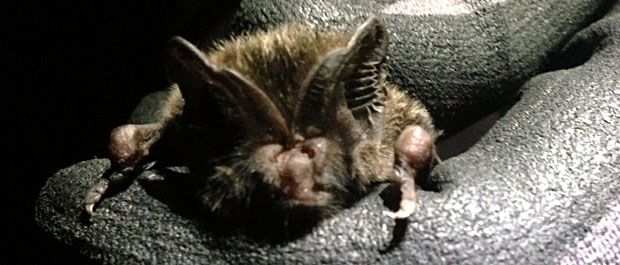Stonehenge

During a night of bat surveying at Wiltshire Wildlife Trust’s Blackmoor Copse nature reserve, researcher Phil Brown from the University of Bristol identified a barbastelle bat. This is the first confirmed sighting of this elusive and rare species of bat on the reserve.
Working with the Trust’s reserves officer, Ashley White, Phil set up traps to discover what species call the reserve home. Ashley said “The sighting of a barbastelle tells us that our approach of managing the reserve for a wide range of wildlife is working. The area where the barbastelle was found is an area of ancient woodland with mature and veteran oak trees. It is really good news for the Trust and for the groups of volunteers who help us to look after this special site.“
Speaking about his find, Phil said “It is great to catch a rare bat such as a barbastelle. Every night I go out trapping for bats I’m excited by what I could potentially catch. At Blackmoor Copse I was particularly hopeful, as while I was walking around the woodland in the day I found some areas of old oak woodland with ideal locations to set up my traps. I had high hopes and wasn’t disappointed!
The barbastelle was a great catch and record but we also caught two other bats of interest. My research is focusing on finding a species of bat that was only described as a species new to science as recently as 2001 and has only been confirmed in the UK since 2011 called the Alcathoe bat. It looks very similar to two other known British species; the Brandt’s and Whiskered bats. As they all look so similar the only way to get an accurate positive identification is through DNA analysis. As well as the Barbastelle record we also caught two bats which are either Brandt’s, Whiskered or Alcathoe, but we’ll have to wait until I’ve done the DNA analysis to find out exactly what they are. Watch this space Wiltshire!”
Dr Carol Williams, Director of Conservation, Bat Conservation Trust, said “Barbastelle bats are very rare, with few breeding roosts currently known in the UK. It is fantastic that Phil’s research, which is supported by Bat Conservation Trust, has added a valuable piece to the jigsaw in mapping its distribution. Barbastelles require more densely vegetated and undisturbed interior areas of woodland to find a home. Its presence is good news for the Copse as it is makes it clear that this woodland has been managed to benefit a full range of wildlife that includes even the more sensitive species. Now we know barbastelle are in the Copse it is more important than ever that the Wiltshire Wildlife Trust keeps up the good work in the management of this and the surrounding landscape to benefit this rare bat and other species.”
Classified as Vulnerable by the 2000 IUCN Red List, barbastelles are identified by their long white-tipped, dark-brown fur which gives them an almost frosty look. They typically live in wooded areas near water. These skilled hunters will emerge as the sun sets and hunt for moths and flies.
Through the year, these bats will roost in trees and occasionally also roost in crevices in buildings. As summer fades into autumn, barbastelles will be mating and, fingers crossed, next summer Blackmoor Copse will have a new generation of barbastelles!
It is particularly good news for the Trust, as Blackmoor Copse was its first nature reserve, purchased in 1962. Supported by the Hills Group, this important woodland is also home to other rare species such as the pearl bordered fritillary butterfly that flit among delightful wildflowers such as wood anemones and common spotted orchids. Visitors here may spot tell-tale signs of the fallow and muntjac deer that roam freely through the woods.
If you find a bat, or need help with bats, please call the Bat Helpline 0845 1300 228 and if you are interested to find out more about bats visit www.bats.org.uk. If you would like to volunteer with Wiltshire Wildlife Trust, log on to www.wiltshirewildlife.org and click on ‘get involved’.